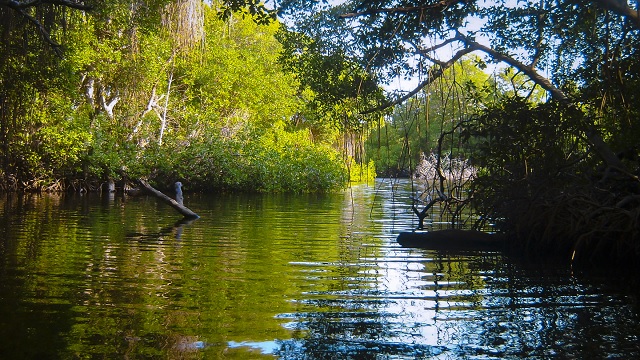Bacterias, as we know, are so small that they can only be observed under a microscope. However, recently the scientist has made a shocking discovery of a bacterium that is so big that it can be seen with the naked eye.
This bacteria is found in a Caribbean mangrove swamp and is considered the world’s largest bacterium.
According to a marine biologist at the Lawrence Berkeley National Laboratory, Jean-Marie Volland, who is also the co-author of a paper that announced the tremendous discovery on June 23 in the journal Science, a thin white filament, as big as a human eyelash, is “by far the largest bacterium known to date.”
The bacterium has been named Thiomargarita Magnifica, or “magnificent sulfur pearl,” by Olivier Gros, a co-author and biologist at the University of the French West Indies and Guiana. He is the one who found the first example of this bacterium while it was clinging to sunken mangrove leaves in the archipelago of Guadeloupe in 2009.
However, Olivier did not realize it was a bacterium at first, due to its surprisingly large size. In his research, he found that these bacterias reach a length of a third of an inch (0.9 centimeters), on average. Later on, genetic analysis revealed that the organism is in fact a single bacterial cell.
Petra Levin, a microbiologist at Washington University in St Louis, who was not involved in the study called it an “amazing discovery.”
“It opens up the question of how many of these giant bacteria are out there — and reminds us we should never, ever underestimate bacteria,” he added.
Olivier also found the bacterium attached to oyster shells, rocks, and glass bottles in the swamp.
Although scientists are still trying to grow these bacteria in a lab culture, they have not been successful till now. As per the researchers, the cell has a structure that’s unusual for bacteria. Moreover, the major part of it that makes it different from other bacteria is its large central compartment, or vacuole, that allows some cell functions to happen in that controlled environment instead of throughout the cell.
Manuel Campos, a biologist at the French National Center for Scientific Research– who was not involved in the study– said that the acquisition of this large central vacuole definitely helps a cell bypass physical limitations “on how big a cell can be.”
Although the researchers aren’t certain of the bacteria’s unusual size, co-author Volland’s hypothesis claims that it may be an adaptation to help it avoid being eaten by smaller organisms.




 Ms Kalinga
Ms Kalinga